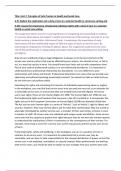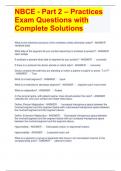Essay
Essay Unit 7 - Principles of Safe Practice in Health and Social Care
- Vak
- Instelling
This unit 7 coursework is my resubmission. It's met all the criteria in there , for this coursework I got a distinction. It has purple pen improvements in there as well.
[Meer zien]












